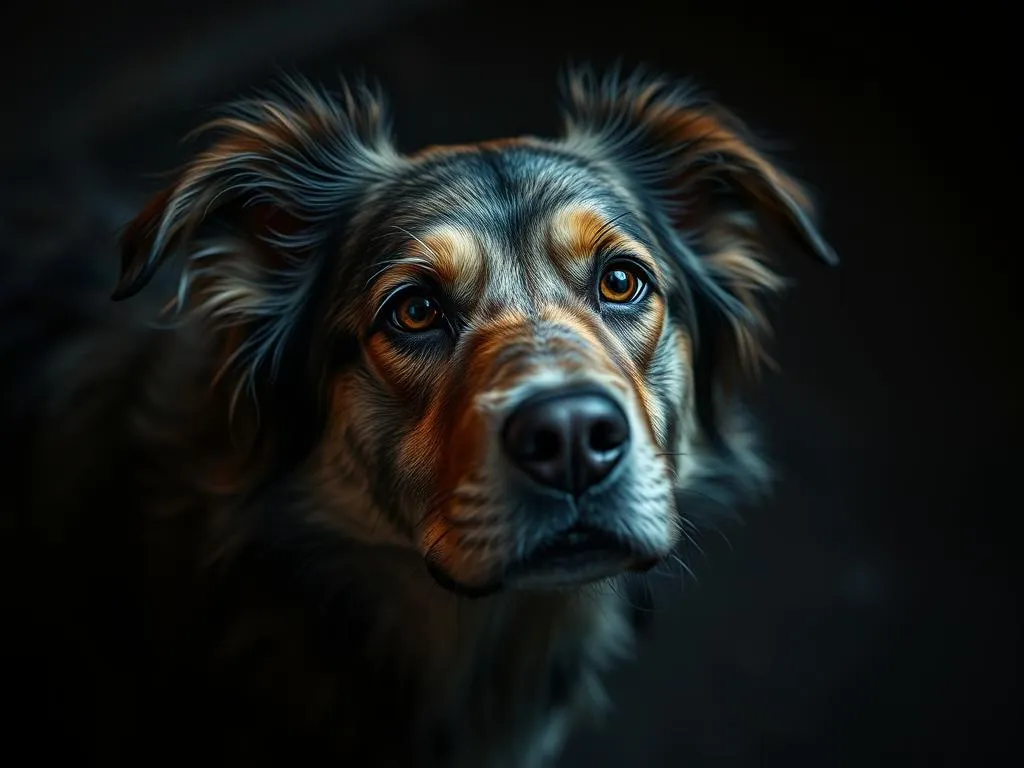
Understanding dog behavior is crucial for their health and well-being. One topic that often arises among pet owners is whether dogs experience fear, particularly are dogs afraid of the dark. This fear can significantly impact their behavior and health. By exploring this subject, we can better understand how to care for our furry companions.
Understanding Dog Psychology
How Dogs Perceive the World
Dogs experience the world quite differently than humans. While humans rely heavily on vision, dogs depend significantly on their sense of smell and hearing. They can detect a wider range of sounds and scents, allowing them to navigate their environment in ways that we may not fully comprehend. However, this also means that dogs may perceive darkness differently than we do.
In low-light conditions, a dog’s vision is not as compromised as a human’s, but their surroundings can still be confusing. Shadows and unfamiliar noises might trigger anxiety, leading them to associate darkness with fear. This unique perception underscores the importance of understanding how our pets experience their environment.
Common Fears in Dogs
Fears and anxieties in dogs can manifest in various forms. Some common fears include:
- Loud noises (thunderstorms, fireworks)
- Unfamiliar environments (new places or situations)
- Separation anxiety (being away from their owners)
When these fears arise, they can lead to behavioral changes and health issues. For instance, a dog that is afraid of loud noises might bark excessively or even try to escape. Similarly, a fear of darkness could result in anxiety-driven behaviors, affecting their overall well-being.
Are Dogs Afraid of the Dark?
Signs a Dog May Be Afraid of the Dark
Recognizing whether your dog is afraid of the dark is essential for addressing their needs. Some behavioral indicators include:
- Whining or whimpering when it gets dark
- Seeking comfort from their owner or a safe space
- Hiding in corners or under furniture
- Panting or pacing restlessly
Physical signs can also indicate fear. A dog that trembles, has a rapid heartbeat, or exhibits a tense posture may be experiencing anxiety related to darkness.
Factors Contributing to Fear of the Dark
Several factors can contribute to a dog’s fear of the dark, including:
- Genetics and breed tendencies: Certain breeds are more prone to anxiety and fear-based behaviors.
- Past traumatic experiences: A dog that has had a negative experience in the dark may develop a lasting fear.
- Lack of socialization: Dogs that haven’t been exposed to various environments may struggle more with unfamiliar situations, including darkness.
Understanding these factors can help owners create a supportive environment for their pets.
The Impact of Fear on Dog Health
Short-Term Effects
When dogs experience fear, their bodies go through a stress response. This can manifest in various ways, such as:
- Increased heart rate: A frightened dog may have a faster heartbeat.
- Anxiety: Dogs may exhibit signs of anxiety, such as restlessness or aggression.
- Changes in behavior: Some dogs may withdraw or become overly clingy when feeling scared.
These short-term effects can lead to immediate discomfort for the dog, disrupting their overall health and happiness.
Long-Term Consequences
Chronic fear can have severe long-term consequences for a dog’s health. Prolonged exposure to stress can lead to:
- Immune system suppression: Stress can weaken a dog’s immune system, making them more susceptible to illness.
- Behavioral issues: A dog that consistently experiences fear may develop more severe behavioral problems, such as separation anxiety or aggression.
Addressing fears promptly is vital for ensuring a dog’s long-term health and happiness.
Addressing Fear of the Dark in Dogs
Creating a Safe Space
Creating a secure environment for your dog can help alleviate their fear of the dark. Here are some tips for setting up a comfortable sleeping area:
- Choose a quiet location: Select a space where your dog feels safe and is less likely to be disturbed.
- Provide cozy bedding: A comfortable bed can help your dog feel more secure.
- Use familiar items: Incorporate their favorite toys or blankets to create a sense of familiarity.
A safe space allows your dog to retreat when feeling anxious, providing them with comfort during stressful moments.
Training Techniques
Training can also be an effective way to help dogs cope with their fear of darkness. Here are some strategies:
- Positive reinforcement: Reward your dog for calm behavior during dark moments. Treats, praise, and affection can reinforce their sense of security.
- Gradual desensitization: Slowly expose your dog to darkness in a controlled manner. Start with dim lighting and gradually reduce the light level while offering comfort and reassurance.
These techniques can empower dogs to face their fears, promoting emotional resilience.
Using Light as a Comfort Tool
Introducing light can also help ease a dog’s fear of the dark. Here are some benefits of using lighting:
- Night lights: A soft night light can provide comfort without being overwhelming. It can help your dog feel more secure during nighttime.
- Gradual introduction: Start with dim lighting and gradually increase the brightness as your dog becomes more comfortable.
Using light as a comfort tool can ease anxiety and provide reassurance for dogs that are fearful of darkness.
When to Seek Professional Help
Recognizing Severe Anxiety
It’s essential to recognize when a dog’s fear escalates to severe anxiety. Signs that indicate the need for professional intervention include:
- Destructive behavior: Chewing furniture or excessive scratching can signify distress.
- Excessive barking: Continuous barking in response to fear may indicate a deeper issue.
If you notice these signs, it may be time to seek professional help.
Types of Professionals to Consult
Several professionals can assist with managing a dog’s fear of the dark:
- Veterinarians: They can assess your dog’s overall health and rule out any medical issues.
- Animal behaviorists: These experts specialize in understanding and modifying animal behavior. They can provide tailored strategies for your dog’s specific needs.
- Trainers: Professional trainers can guide you through effective training techniques to help your dog cope with fear.
Understanding the various approaches available can lead to more effective solutions for your pet’s anxiety.
Conclusion
Recognizing whether dogs are afraid of the dark is crucial for their overall health care. By understanding dog psychology and the various factors contributing to their fears, owners can take proactive steps to create a supportive environment. Addressing these fears through safe spaces, training techniques, and comfort tools can significantly improve a dog’s quality of life. Being observant and proactive about your pet’s anxieties is essential for their well-being, ensuring they live happier, healthier lives.









